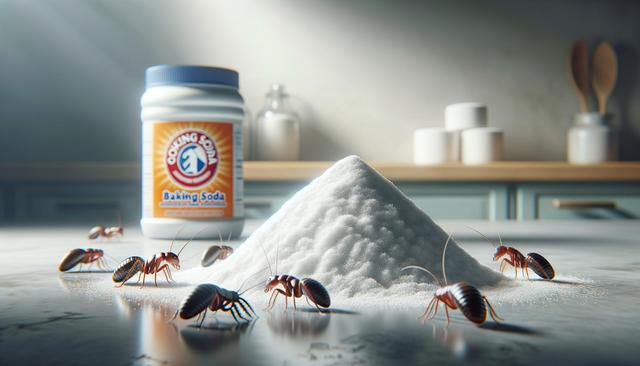Why Baking Soda is a Practical Pest Control Option
Baking soda, also known as sodium bicarbonate, is widely recognized for its versatility in cleaning and deodorizing. However, it also plays a valuable role in pest control. What makes baking soda particularly appealing is that it’s non-toxic to humans and pets when used properly, making it a safer alternative to chemical pesticides. Its mode of action varies slightly depending on the type of pest, but in many cases, it works by causing internal damage to insects when ingested or disrupting their habitat.
This natural substance is especially useful for people looking to reduce chemical use in their home environment. It can be sprinkled in areas where pests frequent, such as under sinks, behind appliances, or along windowsills. It’s important to note that while baking soda is effective for certain pests, it may not be a single solution for large infestations but rather a component of an integrated pest management approach.
Targeting Specific Pests with Baking Soda
Baking soda can be used against a variety of household pests, each with a different strategy. For instance, it is commonly used to manage ant problems. When mixed with sugar, the sugar attracts the ants while the baking soda disrupts their digestive system upon ingestion. Similarly, it can target cockroaches by combining it with a bait like powdered sugar or flour.
Here are a few pests that baking soda can help repel or reduce:
- Ants: Mix equal parts of baking soda and powdered sugar, and place small amounts near ant trails.
- Cockroaches: The same sugar and baking soda combination can be placed in corners and behind appliances.
- Silverfish: Sprinkle baking soda in damp areas where these insects are found.
- Fleas: Vacuum carpets thoroughly, then sprinkle baking soda, let sit for a few hours, and vacuum again.
Each of these methods requires some patience and repetition. While not an instant fix, regular use can significantly reduce pest populations over time.
How to Apply Baking Soda for Maximum Effect
Proper application of baking soda is crucial for its success in pest control. Start by identifying the areas where pests are most active. Once these locations are established, you can apply baking soda directly or mix it with attractants like sugar or flour. It’s best to use small, shallow containers or bottle caps to prevent mess and make cleanup easier.
Additional tips for application include:
- Reapply every few days, especially in high-traffic pest areas.
- Keep the mixture dry, as moisture can reduce effectiveness.
- Use gloves when applying near food preparation areas to maintain hygiene.
- Store unused mixtures in sealed containers to prevent contamination.
This method works best in conjunction with good sanitation practices. Ensuring no food scraps are left out and sealing entry points will enhance the effectiveness of baking soda as a pest deterrent.
Precautions and Limitations to Consider
While baking soda is generally safe, there are a few precautions to consider. For example, though it is non-toxic, large quantities could pose a risk if ingested by pets or small children. Always place baking soda traps in areas inaccessible to them. Additionally, its effectiveness can vary depending on the type and scale of infestation.
Limitations of using baking soda in pest control include:
- May not work well for flying insects like mosquitoes or fruit flies.
- Requires consistent application for noticeable results.
- Not a substitute for professional pest control in severe infestations.
- Environmental factors like humidity can reduce its lasting power.
Understanding these limitations helps manage expectations and ensures safer, more informed use of this household product.
Integrating Baking Soda into a Holistic Pest Management Approach
Baking soda works best as part of a broader pest management strategy. While it can reduce numbers and discourage pest activity, pairing it with other methods will yield stronger results. Sealing cracks, maintaining a clean environment, and using traps or barriers are all complementary practices.
Consider combining baking soda with the following approaches:
- Regular cleaning to eliminate food sources.
- Using natural deterrents like essential oils or vinegar in tandem.
- Installing door sweeps and window screens to block entry points.
- Consulting with a pest control professional for persistent problems.
By integrating baking soda into a well-rounded strategy, you can create a less hospitable environment for pests without relying heavily on chemicals.
Conclusion: A Simple, Natural Option Worth Trying
For homeowners seeking a low-risk, natural solution for common pests, baking soda offers a practical and affordable option. While it may not be a one-size-fits-all remedy, its ease of use and availability make it a useful addition to any pest control toolkit. When used thoughtfully and consistently, baking soda can contribute significantly to a cleaner, safer living space.


